Classical Music CDs Round-Up 6 | reviews, news & interviews
Classical Music CDs Round-Up 6
Classical Music CDs Round-Up 6
March releases have a late-romantic bias
This month’s reviews have a heavy late-romantic bias: chamber music by Dvořák, fascinating and idiosyncratic Mahler from Bernstein and Tennstedt, and some superb recordings of Bruckner, Sibelius and Rachmaninov (or Rachmaninoff, as Gianandrea Noseda and the BBC Philharmonic Orchestra prefer to call him). The more offbeat items include an eclectic piano recital, two quirky ballet scores from the Soviet Union and contemporary orchestral music from France inspired by the cosmos. As usual, click on the links to purchase these items on Amazon.
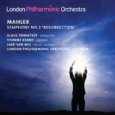 Mahler: Symphony No 2 ‘Resurrection’, London Philharmonic Orchestra and Choir/Tennstedt, with Yvonne Kenny (soprano) and Jard van Nes (mezzo-soprano) (LPO)
Mahler: Symphony No 2 ‘Resurrection’, London Philharmonic Orchestra and Choir/Tennstedt, with Yvonne Kenny (soprano) and Jard van Nes (mezzo-soprano) (LPO)
High-voltage, bargain-price Mahler, here a relay of a performance given in London’s Royal Festival Hall in February 1989. Like Bernstein, Klaus Tennstedt was a passionate advocate of these symphonies, recording them with the LPO in the 1980s. This live version of the Resurrection is frequently startling - extremely expanisve but exciting, dramatic and highly charismatic. Tennstedt’s measured opening Allegro maestoso is filled with moments of expressionist terror, with the players gamely submitting to his every whim. The coda is pitch black, with every glimmer of hope extinguished. This despair is echoed in those minutes following the huge dissonant eruption in the Scherzo, as bittersweet fragments of melody sink into the depths.
Jard van Nes’s moving account of Urlicht leads us into a Finale again noticeable for extremes of tempo and dynamic. The off-stage brass for once sound truly distant, and not just because the producer has turned the levels down. The central march section is surprisingly energetic, and once those offstage trumpets have introduced the choir, we know that we’re well and truly heading for redemption. In the hands of some conductors this ending can smell of the ripest cheese, but the grittiness of so much of what’s gone before makes it a deeply affecting and emotional satisfying conclusion. The playing and singing are excellent, and the recording, made by the Music Performance Research Centre, is near-faultless. Those curious about the "Tennstedt effect", what Andrew Mellor in the sleeve note describes as "living art of the most acute profundity", should investigate without delay. Find on Amazon
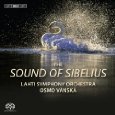 Sibelius: The Sound of Sibelius, Orchestra Works, Lahti Symphony Orchestra/Vänskä (BIS)
Sibelius: The Sound of Sibelius, Orchestra Works, Lahti Symphony Orchestra/Vänskä (BIS)
Osmo Vänskä’s recent Sibelius concerts with the LPO received rave reviews, and for more than a decade his recordings of the composer’s orchestral music have been issued by the Swedish label BIS. Several of the works on this SACD have been issued before, but all are now remixed in widescreen surroundsound. The effect is sumptuous - the low brass in Finlandia really roar, and the percussion in Lemminkäinen’s Return has a fantastic physical presence. The 78-minute programme includes several lesser-known works, such as the brief exquisite Scene with Cranes where a pair of clarinets sound out an early anticipation of the Fifth Symphony’s “swan theme”. Vänskä revived Sibelius’s forgotten tone poem The Wood Nymph in 1996. It slightly outstays its welcome, but the opening paragraph couldn’t be by any other composer. Vänskä’s Lahti players are audibly enjoying themselves in the more extrovert and popular works. Sample the final Alla Marcia from the Karelia Suite, which the sleeve note tells us was originally meant to accompany a tableau portraying tax collection. Find on Amazon
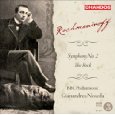 Rachmaninoff: The Rock; Symphony No 2, BBC Philharmonic Orchestra, Noseda (Chandos)
Rachmaninoff: The Rock; Symphony No 2, BBC Philharmonic Orchestra, Noseda (Chandos)
Rachmaninoff, not Rachmaninov here - the former being how the composer spelt his own name, and how it’s inscribed on his gravestone. Another excellent recording of this superb Russian symphony, following on from last month’s Naxos version with the Detroit Symphony and Leonard Slatkin, it’s a more reasoned and level-headed work than any of Tchaikovsky’s mature symphonies - which isn’t to say that there isn’t a great deal of typically Slavic Sturm und Drang going on. Rachmaninoff’s First Symphony received a disastrous premiere in 1897, an event which nearly destroyed the composer’s creative confidence. The Second Symphony had a protracted gestation and was finally given a successful first performance in 1908. Of Brucknerian dimensions, it was performed for many years with severe cuts. Fortunately, Gianandrea Noseda gives us the complete score together with the first movement repeat. The BBC PO do not sound as opulent as Slatkin’s Detroit players, but this is not a hindrance - the leaner sound and drier acoustic mean that you catch more of the details - such as the bright flecks of glockenspiel and quiet chattering woodwinds in the second movement. Personally, I can never hear enough of those low hand-stopped horn notes which Rachmaninoff used so well, cutting through the murk like buzz saws. Noseda’s Adagio is slightly more expansive than Slatkin’s, and notable for John Bradbury’s beautifully phrased clarinet solo. The symphony is prefaced by a strong account of the early tone poem The Rock. With eloquent sleeve notes and superb Chandos sound, this is self-recommending. Find on Amazon Rachmaninov: Symphonic Dances; The Isle of the Dead; The Rock, Royal Liverpool Philharmonic Orchestra/ Petrenko (Avie)
Rachmaninov: Symphonic Dances; The Isle of the Dead; The Rock, Royal Liverpool Philharmonic Orchestra/ Petrenko (Avie)
More orchestral Rachmaninov from the North-West. The Symphonic Dances, a three-movement symphony in all but name, was the composer’s final work, dating from 1940. All Rachmaninov’s obsessions are here - wistful nostalgia, propulsive energy, with the Dies Irae plainchant underlying the melodic outlines. Towards the end of his life, the harmonic language and orchestral textures grew leaner, but this is not forbidding or austere music. Vasily Petrenko’s Non Allegro is swift and unsentimental, with a wonderfully characterised saxophone solo in the central section. And that bitter-sweet recollection of the self-censored First Symphony in the closing minutes is really heartbreaking, made even more so by Petrenko’s refusal to slow the pace. The playing of the RLPO is world-class - particularly in the last dance. Never has that slow, rhapsodic reverie dripped with such bittersweet anguish, and the coordination displayed in the dazzling, demonic final pages is impressive. And that close, capped by a mighty tam-tam stroke - is it a triumphant shout of joy or a cry of pain? Avie’s recording is of demonstration quality - the microphones placed close up, giving the sound an intense physicality. The couplings are a wonderfully stygian rendering of The Isle of the Dead and a fresh performance of The Rock. Find on Amazon
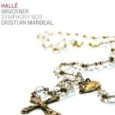 Bruckner: Symphony No 9 in D Minor, Hallé Orchestra/Mandea (Hallé)
Bruckner: Symphony No 9 in D Minor, Hallé Orchestra/Mandea (Hallé)
Another unexpected treasure from a regional British ensemble and a reminder that outstanding playing isn’t the sole preserve of the bigger London bands, Bruckner’s Ninth Symphony is one of the greatest might-have-beens in the repertoire - the Finale was virtually complete in short score when Bruckner died. Witnesses recall a miraculous overlaying of themes from previous movements in the coda. Unfortunately, many of the pages of manuscript disappeared shortly after Bruckner’s death, some probably taken as souvenirs by colleagues and admirers. There have been several speculative completions of the music, but none have caught on. Miraculously, the three existing movements chart a highly satisfying musical journey, and as the Adagio fades into silence you can’t help feeling relieved that nothing has to follow afterwards.
The Romanian conductor Cristian Mandeal was the Hallé Orchestra’s Principal Guest Conductor until 2009, and his account can withstand comparison with classic accounts by Karajan and Wand, the weighty, dark tone of this orchestra well-suited to Bruckner. The very opening is ear-catching - superbly tuned winds in those exposed unison Ds, and the big rising horn figure is like a shaft of light illuminating a gothic cathedral. Mandeal is steady, patient and always serves the music - search for flashy gestures in this performance and you won’t find any. The first movement’s extraordinary, dissonant final climax is a shocker, and the Scherzo is similarly unsettling. Mandeal’s 25-minute final Adagio, with its terrifying dissonant climax, really does offer us a glimpse of paradise. Find on Amazon
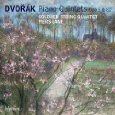 Dvořák: Piano Quintets, Goldner String Quartet, with Piers Lane (piano) (Hyperion)
Dvořák: Piano Quintets, Goldner String Quartet, with Piers Lane (piano) (Hyperion)
The manuscript of Dvořák’s first Piano Quintet, composed in 1872, was destroyed by the composer; fortunately the pianist at the first performance had a higher opinion of the work and had his own copy made. Dvořák subsequently accepted the piece, revising it later in life. It brims with confidence; the effervescent Allegro con Brio finale making a strong impression here. Incredibly, the composer felt that the work was still unworthy of publication, but the act of revising it spurred him in 1887 to write a second piano quintet. Far better known, it’s full of that mixture of Brahmsian rigour and melodic sweetness which characterises Dvořák’s best music - listen to how the gentle cello opening figure leads into a near-orchestral sounding tutti. It’s dramatic, but always genial and lyrical. The second movement Dumka oozes Slavonic soul, and the concluding faster movements bring the work to a life-enhancing close - the magical slowdown two minutes before the end accelerating into an incredibly affirmative, heart-warming final flourish. Superb performances by the Australian Goldner String Quartet and their compatriot Piers Lane, and a beautifully natural-sounding Hyperion recording. Find on Amazon
 Joanna MacGregor: Play (Warner Classics and Jazz)
Joanna MacGregor: Play (Warner Classics and Jazz)
Joanna MacGregor’s Play was nominated for the Mercury Prize in 2001 and is now reissued by Warner. An eclectic piano recital for people who don’t normally like eclectic piano recitals, it features a bewildering roster of composers: Bach, Byrd and Astor Piazolla rubbing shoulders with Nancarrow, Nicolson and John Cage. The results are always entertaining and enjoyable, and never feel didactic. MacGregor’s approach celebrates and highlights the wide range of styles and moods on display, whether aggressive, melancholy or simply playful. Sample her account of Ligeti’s study Autumn in Warsaw. It’s breathtaking. Find on Amazon
Reissue of the Month
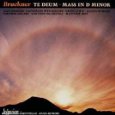 Bruckner: Te Deum: Mass in D Minor, Corydon Singers, Corydon Orchestra/Best, with Joan Rodgers (soprano), Catherine Wyn-Rogers (contralto), Keith Lewis (tenor), Alistair Miles (bass) (Hyperion Helios)
Bruckner: Te Deum: Mass in D Minor, Corydon Singers, Corydon Orchestra/Best, with Joan Rodgers (soprano), Catherine Wyn-Rogers (contralto), Keith Lewis (tenor), Alistair Miles (bass) (Hyperion Helios)
Bruckner’s 1884 Te Deum opens with a massive tutti, with minimalist string figures pulsating under juicy slabs of monolithic choral tone. It’s a bit like something contemporary and minimalist, though a lot more interesting on the ear. One of Bruckner’s own favourite works, this emotionally honest and affirmative music sounds stunning in this reissued performance from 1991, with a superbly weighty but bright-sounding contribution from the Corydon Singers. The recording is well-balanced, enabling some of Bruckner’s quirkier orchestral details to register clearly, and the solo singing is faultless. The coupling is the earlier and more expansive Mass in D Minor. The quality of this little-performed work is astonishing; the music varies in mood from the darkly chromatic opening Kyrie to the sweetly consoling Benedictus. It couldn’t be by any other composer - those chord progressions which on paper look so clunky sound thrilling here. This is simply one of the most moving and uplifting CDs of sacred choral music that I have heard, and it’s now at bargain price. Those curious about dipping their toes into the world of Bruckner should watch Simon Russell Beale’s superb Sacred Music on BBC iPlayer. Find on Amazon
Obscurities of the Month
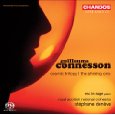 Guillaume Connesson: Cosmic Trilogy, The Shining One, Royal Scottish National Orchestra/Denève, with Eric le Sage (piano) (Chandos)
Guillaume Connesson: Cosmic Trilogy, The Shining One, Royal Scottish National Orchestra/Denève, with Eric le Sage (piano) (Chandos)
The French composer Guillaume Connesson was born in 1970. This disc collects several of his recent orchestral works. Connesson lists his influences as including James Brown and Henri Dutilleux, but the key influence is surely John Adams - the music here is full of propulsive energy, big gestures and ear-catching orchestral effects. It also sounds so unmistakeably French - swooning string passages that sound like outtakes from Daphnis and several gorgeous nocturnal moments which hark back to La Mer. Part of me feels that contemporary music should be harder work than this - I like listening to Boulez’s piano sonatas, and I’ve never found anything by Messiaen an ordeal. Discovering Connesson has thus been a bit of a guilty pleasure; as much as I want to say, "Non - ça suffit," and turn the CD player off, I just can’t.
The main attraction on this superbly produced SACD is the "lyric symphony" Cosmic Trilogy, composed between 1997 and 2007. Of the three sections, the most striking is the central three-part Une lueur dans l’âge sombre - nothing less than an evocation of the birth of the universe from "an age of icy obscurity". Here, Connesson finally calms down and shows us how well he can sustain a musical argument at a slow, steady pace. The most enjoyable item on the disc is the brief piano concerto The Shining One - those opening muted wind chords are pure magic and you can’t help grinning as the pace hots up. Performances, conducted by the composer’s friend Stéphane Denève, are thrilling and accurate, and the rich SACD sound is in Chandos’s best tradition.
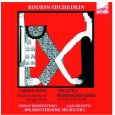
Shchedrin: Carmen-Suite, The Little Humpbacked Horse Suite, Bolshoi Theatre Orchestra/Rozhdestvensky, Zhuraytis (Melodiya)
Karen Khachaturian: Cippolino, Ballet in three acts, Bolshoi Theatre Orchestra/Kopylov (Melodiya)
Rodion Shchedrin’s Carmen-Suite is a work that deserves to be far better known. It’s the sort of piece that makes you jump up and down, promising to buy copies for your friends. A cleverly sequenced ballet arrangement of themes from Bizet’s Carmen, but rescored for strings and percussion, Shchedrin treats his source material with great respect and the result is occasionally bizarre but always compelling. Gasp and grin as tubular bells intone the Habanera over glacial string chords - a bit like a 1970s novelty doorbell. Rozhedestvensky’s recording, made soon after the ballet’s 1967 premiere, remains unsurpassed - it is amazingly vivid and natural-sounding, with the all-important percussion-writing wonderfully present. Coupled with a suite from Shchedrin’s lively first ballet, The Little Humpbacked Horse, this is well worth investigating.
 Karen Khachaturian, nephew of the more famous Aram (composer of Spartacus) became known as a writer of film and cartoon scores in the 1950s. He also found time to compose the Somali national anthem and his three-act ballet Cippolino grew from music composed for a 1960s animated film. Reading the synopsis in the CD booklet is itself a surreal experience - this is the first classical work I have encountered with onions, radishes, tomatoes and lemons as protagonists. The ballet was first performed in 1974, but mostly sounds as if it could have been composed 30 years previously. There are a lot of relentlessly high-spirited dance numbers, making the occasional more dissonant moments sound that much more incongruous. It’s no masterpiece, but it’s breezy, good-humoured and entertaining, conducted with brio by Alexander Kopylov. Find on Amazon
Karen Khachaturian, nephew of the more famous Aram (composer of Spartacus) became known as a writer of film and cartoon scores in the 1950s. He also found time to compose the Somali national anthem and his three-act ballet Cippolino grew from music composed for a 1960s animated film. Reading the synopsis in the CD booklet is itself a surreal experience - this is the first classical work I have encountered with onions, radishes, tomatoes and lemons as protagonists. The ballet was first performed in 1974, but mostly sounds as if it could have been composed 30 years previously. There are a lot of relentlessly high-spirited dance numbers, making the occasional more dissonant moments sound that much more incongruous. It’s no masterpiece, but it’s breezy, good-humoured and entertaining, conducted with brio by Alexander Kopylov. Find on AmazonBox set of the month
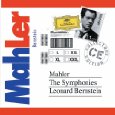 Mahler: The Symphonies (11 CDs), Royal Concertgebouw Orchestra, New York Philharmonic, Wiener Philharmoniker/Bernstein (Deutsche Grammophon)
Mahler: The Symphonies (11 CDs), Royal Concertgebouw Orchestra, New York Philharmonic, Wiener Philharmoniker/Bernstein (Deutsche Grammophon)
Leonard Bernstein probably did more to revive interest in Mahler’s music than any other conductor. He recorded the complete symphonies twice - his 1960s New York cycle has recently been reissued by Sony, and this amazingly compact 11-disc set collects the later DG recordings, mostly deriving from live performances given in the 1980s. Alas, death intervened before he could revisit the colossal Eighth Symphony, so DG here give us a concert relay from 1976. Bernstein identified with Mahler more than any other composer, and clearly loved him nearly to death - the music is hugged, caressed and occasionally mistreated to sometimes alarming, always compelling effect; there are moments when you want to press the stop button but you never quite manage. Put crudely, the 1960s tapings are impetuous, bold and dynamic, while these later ones are slower, more emotive and generally much better engineered. Bernstein re-recorded the symphonies with the New York Philharmonic, the Vienna Philharmonic and the Royal Concertgebouw, three orchestras with notable Mahler traditions, and the sounds that he elicits are remarkably consistent.
The First Symphony is given a magnificent reading with the Concertgebouw - the rapt stillness and trumpet calls of the opening sounding wonderful here, and no one plays those klezmer interludes in the third movement like Bernstein. The same orchestra are heard in the Fourth and Ninth symphonies - the former unusually having a boy treble in the last movement. The first movement’s development is just unsettling enough, and the sheer fun of the score is well conveyed. The Concertgebouw Ninth symphony is far more contentious, with the Adagio finale dragged out to nearly 30 minutes. Bernstein gets away with it - no one else could get orchestras to play this slowly, this well. The faster middle movements are pointed, witty and savage.
The Vienna Philharmonic play Nos 5, 6 and 8. The Fifth is matchless - raw, exciting and joyous in the brighter moments - anyone lucky enough to attend the 1988 prom given by the same forces will enjoy relieving the experience. The Sixth is steadier than Bernstein’s landmark 1967 version, but still pretty visceral and better played. The Eighth, an Austrian Radio recording from 1976 is not as compelling as his 1966 London account and not so well-balanced a recording, but it has a starry line up of soloists. Bernstein refused to accept the idea of a completion of the Tenth, so we just get the opening Adagio.
Bernstein’s "own" New York Philharmonic pick up the remaining symphonies. Best of all is the Seventh - few conductors are able to make this sprawling, quirky piece sound this coherent. The Third sounds as good as it did in the 1960s, with those Ivesian marching bands interrupting the first-movement. The Second is expansive, but with a profound sense of spiritual uplift in the closing pages. Few sets of Mahler symphonies are as entertaining and compelling as this - it’s a must-have and an amazing bargain. Find on Amazon
Share this article
more Classical music
 Christian Pierre La Marca, Yaman Okur, St Martin-in-The-Fields review - engagingly subversive pairing falls short
A collaboration between a cellist and a breakdancer doesn't achieve lift off
Christian Pierre La Marca, Yaman Okur, St Martin-in-The-Fields review - engagingly subversive pairing falls short
A collaboration between a cellist and a breakdancer doesn't achieve lift off
 Ridout, Włoszczowska, Crawford, Lai, Posner, Wigmore Hall review - electrifying teamwork
High-voltage Mozart and Schoenberg, blended Brahms, in a fascinating programme
Ridout, Włoszczowska, Crawford, Lai, Posner, Wigmore Hall review - electrifying teamwork
High-voltage Mozart and Schoenberg, blended Brahms, in a fascinating programme
 Sabine Devieilhe, Mathieu Pordoy, Wigmore Hall review - enchantment in Mozart and Strauss
Leading French soprano shines beyond diva excess
Sabine Devieilhe, Mathieu Pordoy, Wigmore Hall review - enchantment in Mozart and Strauss
Leading French soprano shines beyond diva excess
 Špaček, BBC Philharmonic, Bihlmaier, Bridgewater Hall, Manchester review - three flavours of Vienna
Close attention, careful balancing, flowing phrasing and clear contrast
Špaček, BBC Philharmonic, Bihlmaier, Bridgewater Hall, Manchester review - three flavours of Vienna
Close attention, careful balancing, flowing phrasing and clear contrast
 Watts, BBC Symphony Orchestra and Chorus, Bignamini, Barbican review - blazing French masterpieces
Poulenc’s Gloria and Berlioz’s 'Symphonie fantastique' on fire
Watts, BBC Symphony Orchestra and Chorus, Bignamini, Barbican review - blazing French masterpieces
Poulenc’s Gloria and Berlioz’s 'Symphonie fantastique' on fire
 Bell, Perahia, ASMF Chamber Ensemble, Wigmore Hall review - joy in teamwork
A great pianist re-emerges in Schumann, but Beamish and Mendelssohn take the palm
Bell, Perahia, ASMF Chamber Ensemble, Wigmore Hall review - joy in teamwork
A great pianist re-emerges in Schumann, but Beamish and Mendelssohn take the palm
 First Persons: composers Colin Alexander and Héloïse Werner on fantasy in guided improvisation
On five new works allowing an element of freedom in the performance
First Persons: composers Colin Alexander and Héloïse Werner on fantasy in guided improvisation
On five new works allowing an element of freedom in the performance
 First Person: Leeds Lieder Festival director and pianist Joseph Middleton on a beloved organisation back from the brink
Arts Council funding restored after the blow of 2023, new paths are being forged
First Person: Leeds Lieder Festival director and pianist Joseph Middleton on a beloved organisation back from the brink
Arts Council funding restored after the blow of 2023, new paths are being forged
 Classical CDs: Nymphs, magots and buckgoats
Epic symphonies, popular music from 17th century London and an engrossing tribute to a great Spanish pianist
Classical CDs: Nymphs, magots and buckgoats
Epic symphonies, popular music from 17th century London and an engrossing tribute to a great Spanish pianist
 Sheku Kanneh-Mason, Philharmonia Chorus, RPO, Petrenko, RFH review - poetic cello, blazing chorus
Atmospheric Elgar and Weinberg, but Rachmaninov's 'The Bells' takes the palm
Sheku Kanneh-Mason, Philharmonia Chorus, RPO, Petrenko, RFH review - poetic cello, blazing chorus
Atmospheric Elgar and Weinberg, but Rachmaninov's 'The Bells' takes the palm
 Daphnis et Chloé, Tenebrae, LSO, Pappano, Barbican review - lighting up Ravel’s ‘choreographic symphony’
All details outstanding in the lavish canvas of a giant masterpiece
Daphnis et Chloé, Tenebrae, LSO, Pappano, Barbican review - lighting up Ravel’s ‘choreographic symphony’
All details outstanding in the lavish canvas of a giant masterpiece
 Goldscheider, Spence, Britten Sinfonia, Milton Court review - heroic evening songs and a jolly horn ramble
Direct, cheerful new concerto by Huw Watkins, but the programme didn’t quite cohere
Goldscheider, Spence, Britten Sinfonia, Milton Court review - heroic evening songs and a jolly horn ramble
Direct, cheerful new concerto by Huw Watkins, but the programme didn’t quite cohere

Add comment